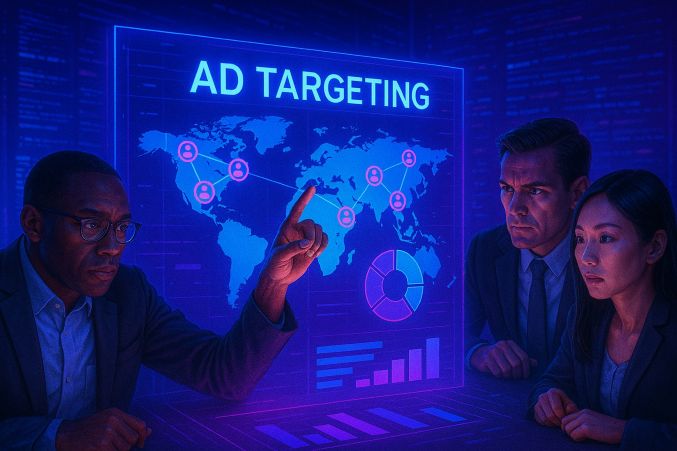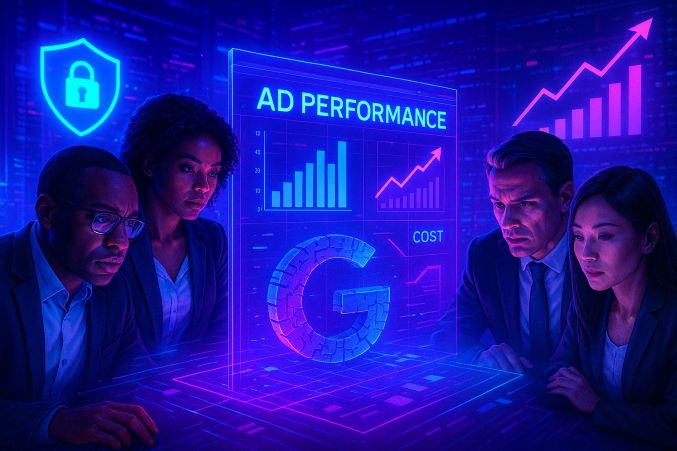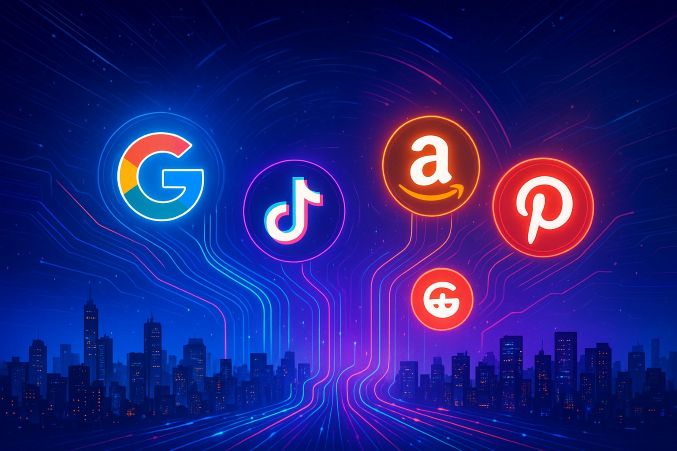Beyond Google: Navigating New Ad Platforms in an Expanding Diversifying Digital Media Landscape
1. Introduction: The Changing Digital Advertising Environment
The digital advert landscape is making a dramatic change. For a long time, Google controlled the market with search and display advertisement, but marketers are now eyeing other alternatives to diversify their approach.
Key Driver of the Trend:
- Privacy Issues: Tighter guidelines (GDPR, CCPA) and retiring third-party cookies are restricting customary tracking practices.
- High Costs: Growing competition in Google Ads has brought with it larger CPCs, which makes certain businesses less affordable.
- Niche Targeting: New platforms feature niche audiences so that brands have the opportunity to interact with the consumer in a more contextual, relevant manner.
With advertisers trying to find a more efficient, more innovative route to consumers, new platforms come along to capitalize on the niche.

2. The End of Google's Grip
Though Google is still a giant in online advertising, its market share is gradually declining.
Statistical Facts:
- Google's share of the U.S. digital ad market will fall below 50% by 2025 (eMarketer).
- Its competitors, Amazon and TikTok, are increasing at a quicker pace, with ad revenue for Amazon rising by more than 20% YoY.
Challenges Confronting Google:
- Regulatory Pressure: Antitrust suits and privacy legislation are compelling Google to shift its ad practices.
- Shifts in Consumer Behavior: Younger viewers are spending more time on social and visual platforms (TikTok, Instagram) as opposed to traditional search.
- Ad Fatigue: Google Ad oversaturation is causing decreased engagement within certain industries.
This drop provides an opportunity for brands to consider alternative platforms that have less competition and more appropriate targeting.

3. Alternative Advertising Platforms in the Rise
There are a few new and older platforms that are disrupting Google's hold by providing some unique benefits.
Microsoft Advertising (Bing Ads)
- LinkedIn Integration: Allows for accurate B2B targeting by using professional demographics.
- Lower CPCs: Generally lower in cost than Google Ads, with an older, more mature audience.
Amazon Ads
- E-Commerce Intent: Amazon shoppers are on the verge of a purchase, resulting in higher conversion rates.
- First-Party Data: Access to the rich shopping behavior for highly targeted campaigns.
- Visual Discovery: Perfect for lifestyle, fashion, and home decor brands.
- Gen Z & Millennial Users: More than 60% of Pinterest's users are female, making it ideal for niche targeting.
- Community-Driven Ads: Ads integrate into discussions, providing genuine engagement.
- Interest-Based Targeting: Subreddits enable accurate audience segmentation.
TikTok
- High Engagement: Short-form video ads work wonderfully with Gen Z and Millennials.
- Creative Flexibility: Brands have the opportunity to use trends and influencer partnerships.
Quora
- Intent-Based Advertising: Users actively looking for answers offer high-intent leads.
- Long-Form Content: Perfect for B2B and thought leadership efforts.
These platforms offer one-of-a-kind strengths that Google cannot always replicate, so they are crucial to a diversified advertising strategy.
4. The Emergence of Retail Media Networks
Retailing juggernauts such as Walmart, Target, and Best Buy are creating their own ad platforms, establishing a new category known as Retail Media Networks (RMNs).
Why Retail Media is On the Rise:
- First-Party Data: Retailers have access to purchase history and browsing information directly.
- Closed-Loop Attribution: Advertisers can trace sales directly to ads, enhancing ROI measurement.
- Shopper Intent: Consumers on these sites are already in purchasing mode.
Key Players:
- Walmart Connect: Connects ad performance to in-store and online sales.
- Target Roundel: Uses customer loyalty data for personalized advertising.
Retail media will comprise 25% of all digital ad spend by 2026, making it a key channel for e-commerce brands.
5. Programmatic Advertising and Demand-Side Platforms (DSPs)
Programmatic advertising streamlines ad purchasing by automating the process, increasing efficiency and scalability.
How DSPs Work:
- Real-time bidding (RTB) on ad inventory is permitted by platforms such as The Trade Desk, MediaMath, and Xandr.
- Targeting via AI ensures reaching the right people at the right moment.
Programmatic Advantages:
- Precision Targeting: Deploys AI for user behavior analysis and optimization of placements.
- Cross-Channel Reach: Ads are possible on sites, apps, CTV, and even DOOH.
- Cost Efficiency: Avoids wasted spend by focusing only on high-intent users.
With the cookie's demise, DSPs are shifting to leverage contextual and first-party data, meeting privacy legislation requirements.
6. Influencer Marketing Platforms
Influencer marketing is no longer reserved for mega-celebrities—micro and nano influencers are commanding greater engagement.
Why Influencer Marketing Works:
- Authenticity: Fans trust influencers over traditional advertising.
- Niche Audiences: Micro-influencers (10K–100K followers) tend to have better engagement.
Best Influencer Platforms:
- AspireIQ, Upfluence, CreatorIQ: Match brands with influencers for collaborations.
- TikTok Creator Marketplace: Enabling partnerships with content creators of viral content.
Best Practices:
- Emphasize Engagement, Not Only Followers
- Apply UGC (User-Generated Content) in Paid Ads
Influencer marketing is estimated to become a $22.2 billion market by 2025, a central element of contemporary ad strategy.
7. Audio and Podcast Advertising: The Sound of Opportunity
Remember when radio ads were the only way to reach listeners? Today, digital audio—especially podcasts and streaming platforms—is booming.
Why Audio Ads Are Surging:
- Ear-Engagement: Unlike display ads, audio ads have a captive audience—people listening while commuting, working out, or relaxing.
- Less Ad Fatigue: Listeners tolerate ads better in podcasts than in social media feeds.
- Hyper-Targeting: Platforms such as Spotify use AI to serve ads on the basis of music preference, podcasts consumed, and even mood.
Key Players in Audio Advertising:
- Spotify Ad Studio: Self-serve platform for playing audio and video ads between tracks.
- Apple Podcasts Ads: Brands can sponsor shows or purchase dynamic ad insertions.
- Pandora & iHeartRadio: Still useful for reaching older audiences.
- Clubhouse (and Twitter Spaces): Live audio rooms enable real-time brand engagement.
Best Practices for Audio Ads:
✔ Be conversational – Listeners react more favorably to real, unscripted-sounding commercials.
✔ Take advantage of host-read commercials – Podcast presenters promoting a product create increased trust.
✔ Utilize assertive CTAs – Because listeners can't tap, use promo codes or sticky URLs.
As podcast ad spend is projected to reach $4 billion by 2025, astute brands are listening in.
8. Digital Out-of-Home (DOOH) Advertising: Smart Billboards
Billboards are no longer static. Digital Out-of-Home (DOOH) advertising—digital billboards, transit screens, and even gas pumps—gets smarter, interactive, and data-fueled.
Why DOOH is on the Rise:
- Tech Enhancements: LED displays, facial recognition (for anonymized audience data), and real-time content refresh.
- Programmatic Buying: Brands can now purchase DOOH ads in real-time through platforms such as Hivestack or Vistar Media.
- High Impact: Contrary to missed online ads, DOOH puts eyeballs—particularly in areas of high foot traffic such as Times Square or airports.
Innovative DOOH Campaigns:
- McDonald's Dynamic Weather Ads: Altered billboard copy depending on current weather.
- Netflix's Interactive Bus Shelters: Allowed commuters "choose your own adventure"-style advertising.
Who Should Use DOOH?
- Local businesses (mall digital signage, restaurants).
- Big brands (airports, stadiums, Times Square takeovers).
- Event marketers (concerts, festivals).
As DOOH ad spending is expected to increase 10%+ a year, it's time to look beyond the screen—literally.
9. AI in Advertising: The Rise of the Machines (In a Good Way)
AI isn't stealing our jobs—it's making ads intelligent, less expensive, and more efficient.
How AI is Changing Ads:
- Hyper-Personalization: AI examines user activity to deliver the ideal ad (e.g., Netflix's thumbnails adjust according to your preferences).
- Predictive Bidding: AI adjusts bids in real-time to maximize conversions.
- Creative Optimization: Tools like Canva’s Magic Design and Google’s Responsive Ads auto-generate high-performing creatives.
AI-Powered Ad Platforms to Watch:
- ChatGPT for Ad Copy: Brands use AI to generate hundreds of ad variations in seconds.
- Pencil AI: Creates video ads from scratch using stock footage and AI voiceovers.
- Albert.ai: Fully autonomous AI that runs and optimizes campaigns.
The Catch?
- Over-reliance on AI can kill creativity.
- Privacy issues (AI requires data—plenty of it).
AI will not replace marketers, but marketers utilizing AI will substitute those who don't.

10. Diversification of Ad Spend Challenges: It's Not All Hunky-Dory
Leaving Google behind for sleek new platforms sounds wonderful—until you encounter these stumbling blocks.
Greatest Challenges:
- Spotty Attribution: If a customer views your TikTok advert, clicks via Google, and purchases from Amazon—who gets the credit?
- Brand Safety Threats: New platforms (such as Reddit or UGC-rich TikTok) risk exposing brands to contentious material.
- Learning Curve: Every platform has its own guidelines, algorithms, and best practices.
How to Overcome Them:
✔ Unified Measurement Tools (Google Analytics 4, Northbeam, Triple Whale).
✔ Strict Ad Placement Controls (block risky content categories).
✔ Test Small Before Scaling (don't put your whole budget behind Pinterest ads day one).
Diversification is mighty—but only if executed intelligently.
11. Case Studies: Brands Winning Beyond Google
1. Gymshark's TikTok Domination
- Strategy: Collaborated with fitness influencers for real UGC.
- Result: $1M+ in sales from one viral campaign.
2. Duolingo's Unhinged Twitter & TikTok Ads
- Strategy: Used meme humor and their owl mascot.
- Result: 500% brand lift without regular Google/Facebook ads.
3. Brooklinen's Pinterest Success
- Strategy: Targeted high-intent "bedroom decor" keywords.
- Result: 40% lower CPA compared to Google Ads.
Key Takeaway?
Play to the strength of the platform—don't simply redo Google ads on every platform.
12. Conclusion: The Future is Multi-Platform
Google is not dead—but it's foolhardy to depend on it and nothing else. Tomorrow's ad winners will:
✅ Experiment with new platforms early (TikTok, retail media, DOOH).
✅ Balance performance and brand-building (not last-click obsessed alone).
✅ Use AI & automation—but not at the expense of human creativity.
Your Next Move?
Choose one of these new platforms and do a little test. The numbers—not speculations—will lead your next great victory.


Comments
No Comments To Display